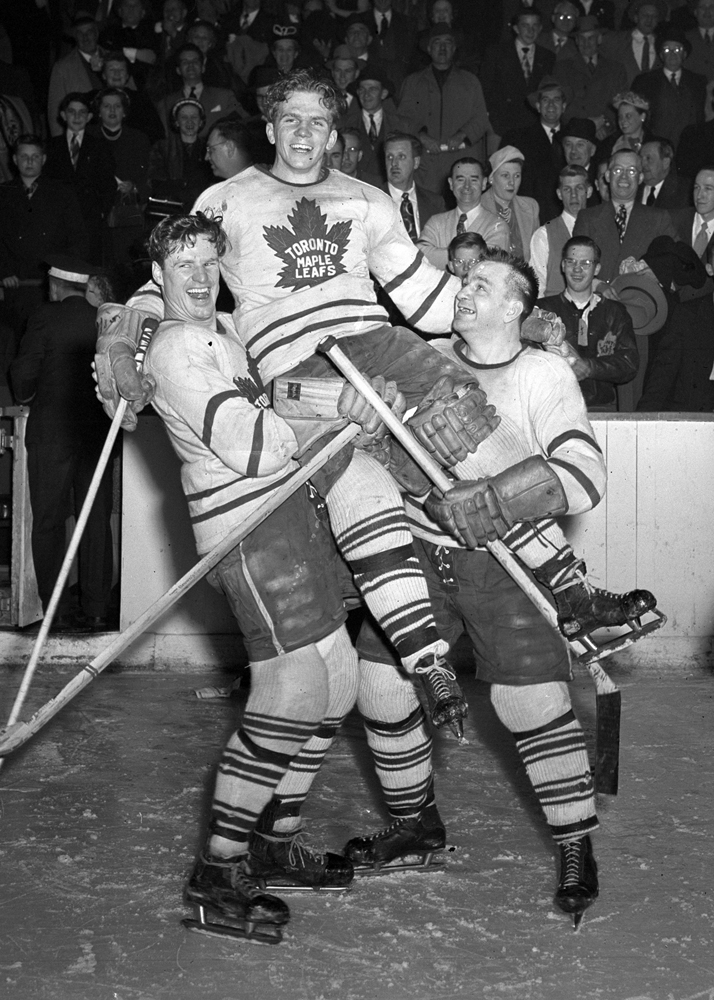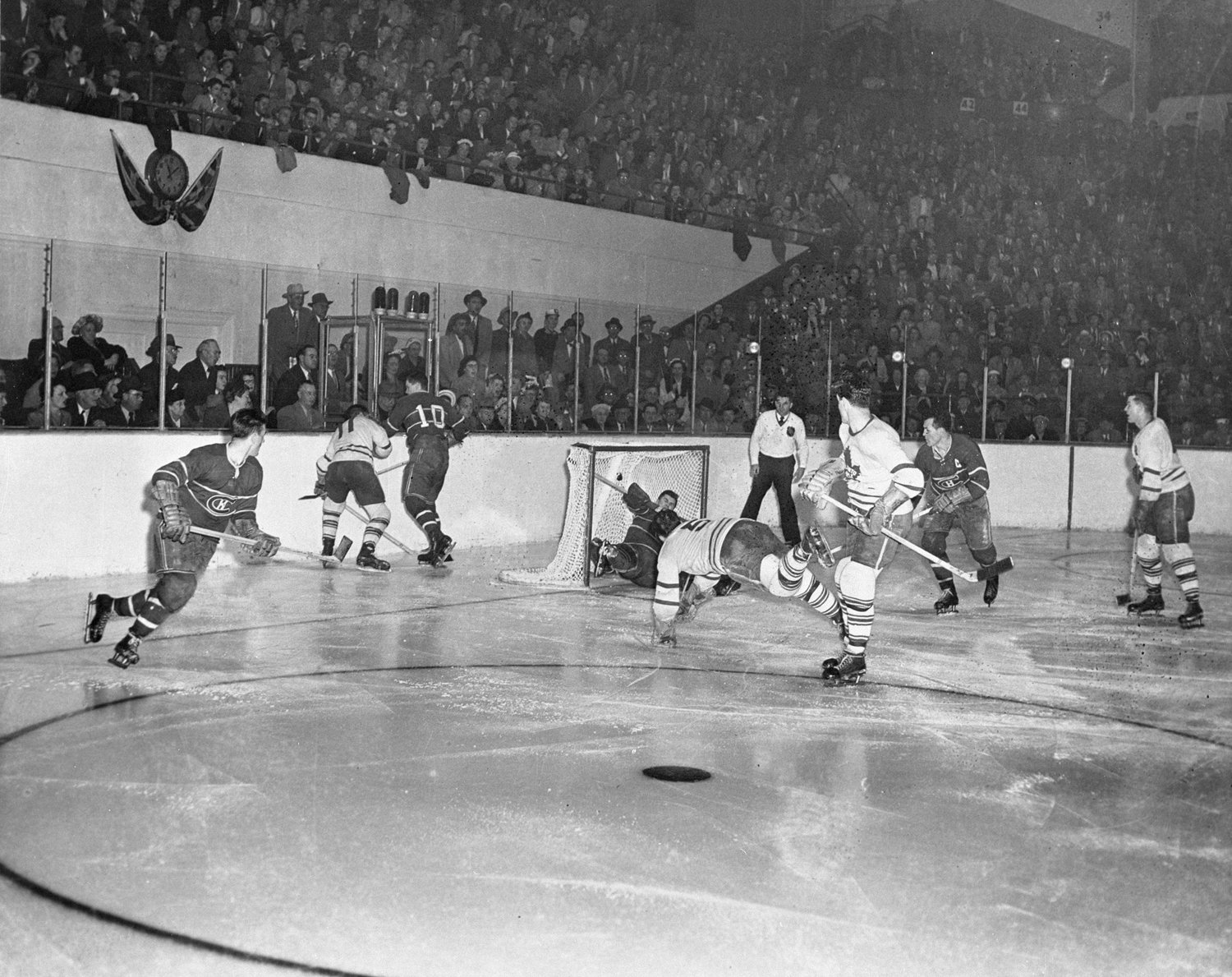Bill Barilko scored a Stanley Cup winning goal - and disappeared shortly after

With that goal, the Leafs captured their fourth Cup in five years. They had faced down the Habs powerhouse, including Maurice “Rocket” Richard, Doug Harvey and Butch Bouchard.
The goal, on April 21, would be the last one the Timmins native would ever score. In fact, it would be his last time on skates. In August he vanished while flying home from a fishing trip in James Bay, causing a sensation across the country.
By 1991, the Barilko story had pretty much disappeared from the public eye. Then the NHL issued a set of playing cards that included Barilko’s famous goal. Kingston singer Gord Downie of The Tragically Hip happened to buy a pack and became entranced by the story on the back of the card – about the goal and Barilko’s tragic death.
“The Tragically Hip brought the story to light and introduced it to a whole new generation who would never have known about Bill Barilko otherwise,” recalls Kevin Shea of the Hockey Hall of Fame and author of the book Barilko: Without A Trace.
On August 26, 1951, a Timmins dentist, Henry Hudson was flying the plane, with Barilko as passenger, returning from a weekend fishing outing. The plane never made it back to Timmins. A massive search involving 38 RCAF planes failed to find the wreckage.
It was only in June 1962 – just weeks after the Toronto Maple Leafs next Stanley Cup win – that a forestry helicopter pilot happened upon the downed craft and the bodies of Hudson and Barilko were recovered.
Downie’s song about Barilko, entitled Fifty-Mission Cap, became a huge hit for the Kingston band. In the lyrics, Downie admits he got the story from the hockey card. “I stole this from a card I keep tucked up under my 50-mission cap.”
The title of the song refers to the hats that Second World War bomber pilots were given when they completed 50 missions – a rare feat given the rate at which planes were being shot down. While some have taken it as a reference to Dr. Hudson’s relative inexperience in flying, Shea says Downie was just being creative. “He was taking two disparate stories – Barilko and a 50-mission cap he saw at the Smithsonian in Washington. He kind of smashed them together into one song.”
During the Second World War, many NHL players enlisted although they were usually kept well away from the front lines. After they started returning following the war, Conn Smythe built a powerhouse in Toronto in the six-team NHL. The Leafs captured the Cup in 1947, 1948, 1949 and 1951, led by goal-scoring wizards like Syl Apps.
Barilko was too young to have served in the war, joining the Leafs in the middle of the 1946-47 season at the age of 20. He was known for his strong defensive skills and punishing bodychecks – which earned him the nickname Bashin’ Bill. “It was just like running into an anvil,” recalls teammate Howie Meeker, who would go on to work as an analyst with Hockey Night in Canada.
Barilko was a key player – but not a star – in the first three Cup wins. The 1951 finals would launch him to nationwide fame. During the regular season, his lacklustre play had almost seen him demoted to the American Hockey League. However, he made it up in the series against Montreal.
It was the only final series in NHL history to see every game decided in overtime. In overtime in the first game, Barilko dove across the goalmouth to block a shot by Richard, preventing a certain goal. Toronto went on to win and then to build a 3-1 series lead.
In the fifth game, down 2-1 in the final minutes, the Leafs pulled the goalie and managed to earn a tie to send the match into yet another overtime.
Coach Joe Primeau gave clear instructions to Barilko. “He told him ‘don’t you dare take any chances.’ He didn’t want Richard or any of the other Montreal stars getting the puck and scoring on a breakaway,” Shea says.
Less than three minutes into overtime, Barilko saw an opportunity - and ignored his orders. A pass from behind the net by Howie Meeker deflected off a skate and came out to the faceoff circle. Barilko rushed in from the blue line, firing a shot past a slumping goaltender McNeil.
Photographer Nat Turofsky captured the moment, with Barilko flying through the air and McNeil falling as the puck goes in behind him. It would be the most famous Stanley Cup-winning goal photo in the history of the league, only later eclipsed by Bobby Orr’s flight in 1970.

That summer, Hudson invited Barilko to fly north from Timmins to James Bay for a fishing trip. Barilko didn’t even like eating fish – but he loved fishing. The two set off on Friday, August 24, 1951, an end-of-summer outing for Barilko before training camp started.
Initially, the trip went well. The pair had caught an estimated 150 pounds of fish – a giant haul that would unfortunately dangerously weigh down the aircraft on the return flight on Sunday. Dr. Hudson was warned that a storm was coming but chose to press on.
“Hudson was an experienced pilot but took chances just like Barilko did on the ice that night,” Shea says. “He rolled the dice more often than he probably should have.”
When the plane failed to arrive on time, a huge rescue operation was launched. Several Leafs players took part, although they soon had to return for training camp. Shea says the disappearance took a big psychological toll on the team. Barilko was a major contributor both on and off the ice, often organizing informal social outings.
“All of a sudden, they’ve lost their heart,” Shea says.
The Leafs went into a slump that would last a decade. Finally, a new crop of stars, including Frank Mahovlich and Dave Keon, would capture the cup in 1962. Just weeks later, a sharp-eyed helicopter pilot discovered the wreckage of the Hudson plane in Northern Ontario.
Would Bill Barilko have been inducted into the Hockey Hall of Fame had he lived and completed his career? Teammate Teeder Kennedy, himself an inductee, was certain that Barilko merited the honour. Shea is unsure. Nevertheless, Shea is confident that Barilko’s legacy will live on for decades to come, thanks to an incredible Stanley Cup-winning goal and a rock band from Kingston.
Photo credits: Thanks to the Hockey Hall of Fame for providing permission to use its photos. Top photo of Bill Barilko by Michael Burns Sr./HHOF and Barilko goal photo by Imperial Oil/Nat Turofsky/HHOF..